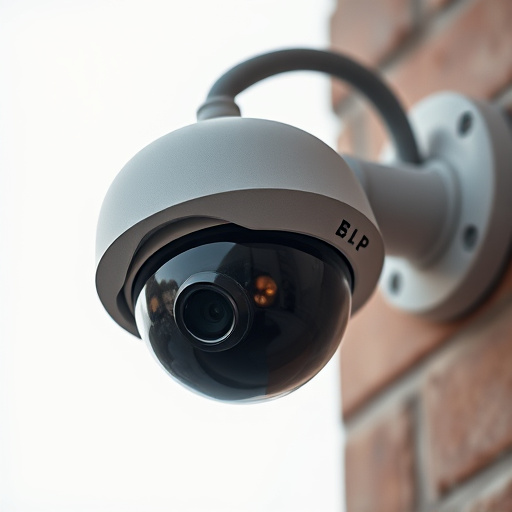Mounting dummy cameras under eaves is an effective, cost-effective way to boost home and business security. These realistic but inoperative devices act as powerful deterrents against intruders by signaling active surveillance. Strategically placed, they blend into the roofline, remaining hidden from ground level, thus reducing the likelihood of intruder detection. With various shapes, sizes, and advanced features available, these cameras provide enhanced security without major modifications or high costs, while also respecting local privacy laws when properly deployed and maintained.
In today’s digital era, security is paramount, but traditional cameras may not suit every need. Imitation security cameras, designed to look like real surveillance equipment, offer a discreet solution. This article explores the world of dummy cameras and their role in enhancing home and business security. We’ll delve into the benefits of mounting these under eaves for optimal discretion, discuss available types, provide installation tips, and highlight legal considerations. Discover how mounting dummy cameras under eaves can transform your security landscape.
- Understanding Dummy Cameras: Their Role in Security
- Benefits of Mounting Under Eaves for Enhanced Discretion
- Types of Imitation Security Cameras Available on the Market
- Installation Tips: Ensuring Effective Coverage and Realism
- Legal Considerations and Best Practices for Utilizing Dummy Cameras
Understanding Dummy Cameras: Their Role in Security
Dummy security cameras, often referred to as imitation or fake cameras, play a crucial role in enhancing home and business security. They serve as an effective deterrent against potential intruders, acting as a visual signal that surveillance is in place. Mounting these cameras under eaves is a popular strategy, as it provides a discreet yet highly visible placement, making it harder for criminals to identify the actual monitoring system.
This tactic leverages the psychological impact of seeing surveillance equipment, even if it’s not operational. The presence of dummy cameras can significantly reduce break-in attempts and deter opportunistic thieves. By strategically placing these realistic replicas, property owners and business managers can create an impression of advanced security measures, potentially saving on actual camera installation costs while enhancing overall safety.
Benefits of Mounting Under Eaves for Enhanced Discretion
Mounting dummy cameras under eaves offers a subtle yet highly effective strategy for enhancing home security. This discreet placement allows the camera to blend seamlessly into the roofline, making it nearly invisible from ground level. By positioning the imitation security camera in such a way, potential intruders are less likely to spot it, reducing the chances of their actions being recorded.
This method is particularly beneficial for those seeking to maintain a low-profile security system that doesn’t attract unwanted attention. The under-eave placement provides an opportunity to capture clear footage without compromising the aesthetic appeal of the property. It’s a smart choice for homeowners who value both discretion and advanced surveillance technology, ensuring peace of mind in a visually unobtrusive manner.
Types of Imitation Security Cameras Available on the Market
The market offers a diverse range of imitation security cameras designed to deter potential intruders, each with unique features and installation options. One popular method is the use of mounting dummy cameras under eaves, taking advantage of the natural concealment provided by the roofline. These cameras mimic real security equipment, often with LED indicators that simulate the glow of a functional camera lens. They are an excellent choice for homeowners looking to enhance their home’s security without significant changes to their property.
Available in various shapes and sizes, from compact models suitable for small homes to more robust designs for larger properties, these dummy cameras provide an affordable and effective deterrent. Some advanced versions feature wireless connectivity, allowing users to monitor live feeds or receive alerts on their smartphones, further enhancing the sense of security.
Installation Tips: Ensuring Effective Coverage and Realism
When installing imitation security cameras with motion sensors, one crucial tip is to leverage the overhead cover provided by eaves. Mounting dummy cameras under eaves offers both effective coverage and a higher degree of realism. This strategic placement helps integrate the cameras seamlessly into your environment, making them less noticeable while ensuring they capture clear footage from various angles.
To maximize their effectiveness, ensure the camera’s field of view aligns with the natural line of sight within the eave. Additionally, consider adjusting the sensitivity of the motion sensor to match your specific needs, balancing between accurate triggering and minimizing false alarms. Regular cleaning and maintenance will also contribute to the overall realism and longevity of these security measures.
Legal Considerations and Best Practices for Utilizing Dummy Cameras
When utilizing imitation security cameras, or dummy cameras, it’s crucial to navigate legal territory responsibly and adhere to best practices. While these devices are designed for decorative or non-surveillance purposes, mounting them in certain areas may still raise privacy concerns. In many jurisdictions, laws regarding surveillance vary widely, with some regions having stricter regulations around the placement of recording devices. For instance, Mounting Dummy Cameras Under Eaves can be a strategic choice for deterring crime, but it’s essential to check local laws to ensure compliance and respect for individuals’ privacy rights.
Best practices suggest transparency in using dummy cameras. Clearly indicating that the devices are not functional security equipment can help manage expectations and avoid potential legal issues. Additionally, securing these cameras properly and placing them in visible locations can serve as a strong deterrent without infringing on privacy. Regular maintenance and occasional replacement of these cameras can also ensure they remain effective and legally sound components of your property’s security strategy.
Mounting dummy cameras under eaves is a strategic approach to enhancing home or business security while maintaining discretion. By utilizing these imitation security cameras, property owners can deter potential intruders and create a false sense of surveillance, adding an extra layer of protection. With various types available on the market and proper installation tips in place, it’s crucial to follow legal considerations for optimal use, ensuring peace of mind and enhanced safety without compromising privacy.
